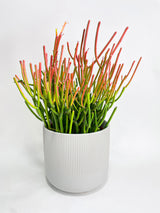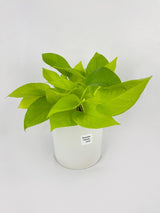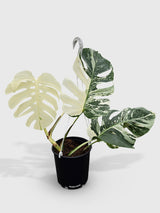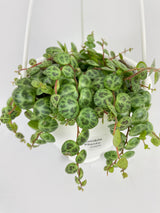You will receive ONE Anthurium Red in a nursery pot, unless stated otherwise. Refer to our FAQ for more information.
Anthurium Red, also known as Flamingo Flower or Laceleaf, is a stunning tropical plant prized for its vibrant red, heart-shaped flowers and glossy green foliage. Known for its long-lasting blooms, this elegant plant makes a perfect gift or a striking addition to any indoor space.
How to Care for Anthurium Red
Watering
Water when the top 1-2 inches of soil feel dry. Keep the soil consistently moist but not soggy, as overwatering can lead to root rot. Use a well-draining potting mix to prevent excess moisture buildup.
Sunlight
Thrives in bright, indirect light. Too much direct sunlight can scorch the leaves, while low light may result in fewer blooms.
Temperature
Prefers warm temperatures between 65°F-85°F (18°C-29°C). Keep away from cold drafts, heaters, and air conditioners.
Humidity
Anthuriums love high humidity levels (60% or more). If your home is dry, mist the leaves occasionally, place a water tray nearby, or use a humidifier.
Toxicity
Anthurium Red is toxic to pets and humans if ingested. Keep it out of reach of children and animals.
Fertilizer
Feed with a balanced liquid fertilizer every 4-6 weeks during the growing season (spring and summer). Use a phosphorus-rich fertilizer to promote blooming.
Growth Rate
A slow to moderate grower that reaches 12-18 inches tall indoors. With proper care, it can bloom year-round.
Pruning
Remove faded flowers and yellowing leaves regularly to encourage new growth and maintain its beauty.
Propagation
Can be propagated through division. When repotting, gently separate offsets with roots and plant them in fresh soil.
Soil Mix
Prefers a well-draining, airy soil mix with organic matter. A mix of peat moss, orchid bark, and perlite is ideal.
Repotting
Repot every 1-2 years or when the plant becomes root-bound. Use a pot with good drainage to support healthy growth.
Common Pests
Susceptible to aphids, spider mites, and mealybugs. Wipe leaves regularly and treat infestations with neem oil or insecticidal soap.
Common Problems
-
-
Yellowing leaves – Often caused by overwatering or poor drainage. Adjust watering habits accordingly.
-
Brown leaf tips – Indicates low humidity or fertilizer burn. Increase moisture or dilute fertilizer.
-
No blooms – May be due to low light or lack of nutrients. Move to a brighter spot and fertilize during the growing season.



















